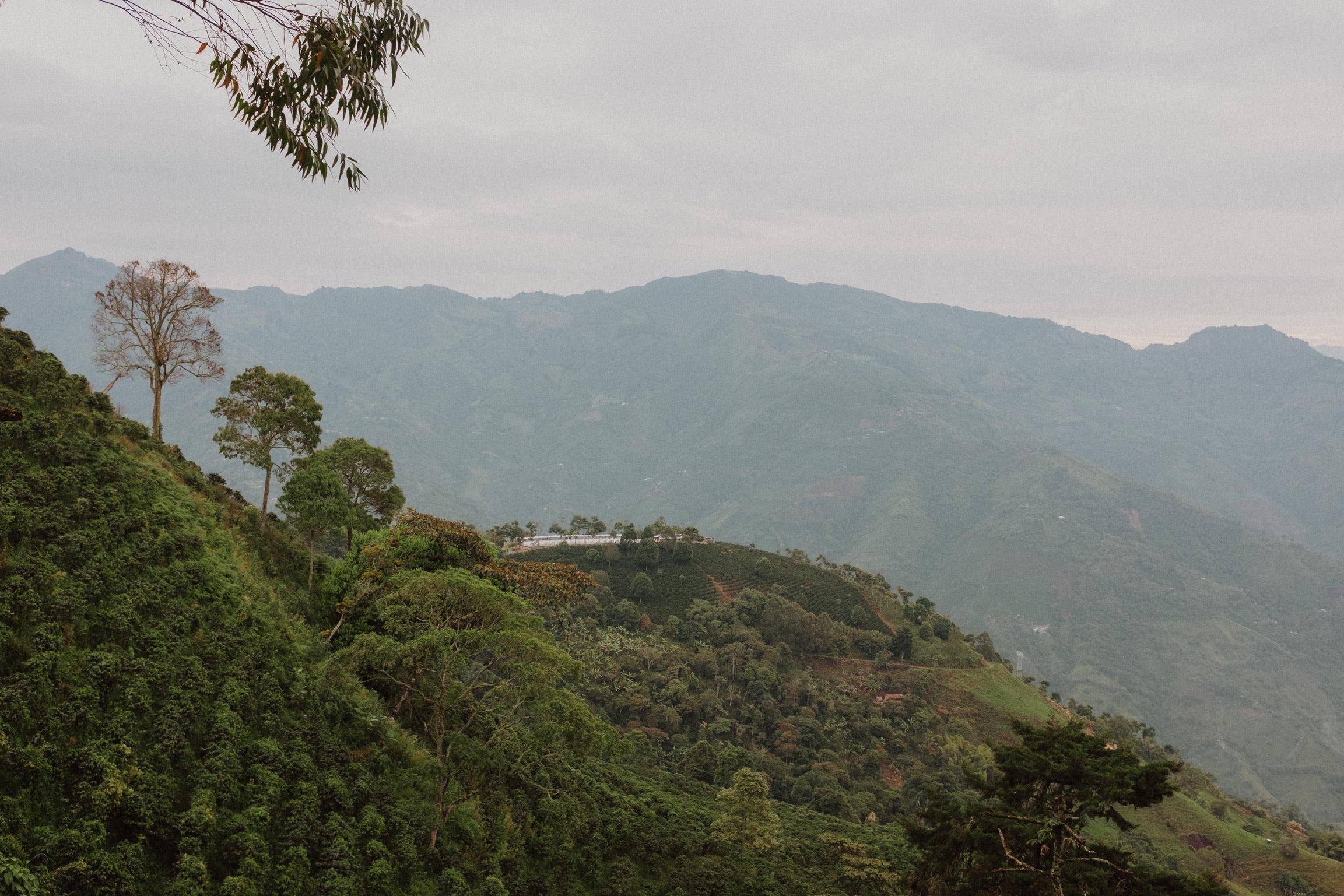
Preparation of filtered coffees
Basic Principles
Before going into detail about brewing, we’d like to cover the core principles of coffee extraction. Brewing coffee is always a delicate game — balancing the quantity of coffee, the quantity of water, the type of grind, and the extraction time. Depending on the method, these factors can be varied in order to highlight specific attributes of a coffee.
Remember that a coffee drink is typically around 1.5% coffee and 98.5% water — any minor change can radically alter the end result.
If you increase one end of the equation, you must lower the other, and vice versa. For example, if you are working with a fine grind, and the coffee is getting over-extracted, you can reduce the amount of coffee you are using, holding constant the water temperature and the extraction time. Another example: if you are working with a lower water temperature, you should increase the extraction time and keep the other variables constant. And so on.
Here, in more detail, are the central factors impacting the brew:
Coffee grind
A coffee’s grind determines the amount of the bean’s surface area exposed to water. The finer the grind, the more surface area exposed to water — and the more intense the extraction. The grind should correspond to the method and time of infusion for optimal extraction. The faster the infusion, the finer the grind. The slower the infusion, the coarser the grind.
Although there are many grades of grind, we divide them into three main categories:
-

Fine grind
Fine powder, like flour
-

Medium grind
Sand-like grains
-

Coarse grind
Like sawdust

Water temperature
The higher the temperature, the greater the quantity of soluble coffee solid that can be dissolved in the extraction. Normally, with the exception of Cold Brew, we recommend using water just below boiling point, which, in the case of Medellín, is 95 degrees Celsius (203 degress Fahrenheit). If water temperature is below this level, more time is required for a proper extraction.
In addition to hydrogen and oxygen, water also contains minerals that it brings to the extraction — the optimum level being 120 particles per million.

Proportion Of Water to Coffee
Proper extraction requires a delicate balance between the amount of water, and the amount of coffee. At Pergamino, we work within a range of between 12 and 15 ml of water per gram of coffee — depending on the type of coffee, its roast, extraction time, brewing method and filter. Given the variability of the water / coffee relationship, we are always experimenting with different proportions when working with a new coffee.
EXTRACTION TIME AND BREWING METHOD:
Time and method of extraction go hand in hand, since extraction time varies according to the method and filter used.
Here are two families of slow filtrates:
-
Steeping
Coffee is immersed in water for a period of time, before the drink is strained through a filter to separate out the grounds.
– Steeping methods require a coarser grind than drip methods, since the grounds are in direct contact with the water for a longer period of time.
-
Drip
In drip methods, coffee is extracted as water passes through the grounds with the pull of gravity, and is strained through a filter that separates out the coffee particles.
– Drip methods require a medium grind, as the coffee is only in contact with the water for a few seconds. In order for extraction to take place rapidly as the water passes through, more surface area of the grounds must be exposed.
-
Types of filters
– Perforated metal trays (Moka).
– Woven wire mesh (Evasolo, French press).
– Cloth (Greca).
– Paper of different densities (Chemex, automatic drip coffee machines, V60, Aeropress, Siphon, among others).
-
Turbulence
The way we add water to coffee grounds greatly influences the final result due to the level of turbulence we create while pouring. This is particularly important in drip methods, where we pour the water in a circular manner to create a swirl, and the coffee grounds move in contact with the water. In some cases, we also use a stirrer to generate turbulence and move the grounds around
-
Pre-infusion/Bloom
Pre-infusion (or bloom) is the first contact between coffee grounds and water. In this first quick pour, we add just enough water to moisten the grounds and release the CO2 that still remains inside the beans after roasting. Think of this process as a rapid degassing. You should add double the amount of water as coffee. For example, if a Chemex uses 32 grams of coffee, you should add about 64 ml of water.
Seguir Leyendo
-

01. Introduction
See moreWe are privileged to work in every stage of the coffee process — from farm to cup.
-

02. What are specialty coffees?
See moreWe’ll begin by defining specialty coffees — and what differentiates them from lower-quality beans.
-

03. Describing coffee
See moreCoffee is like wine. There’s the gas-station kind that taste like sludge, the critically-acclaimed kind that experts and hipsters alike hail as tasting like bouquets of flowers — and everything in between.
-

04. Agronomy
See moreThe process begins with a seed (the coffee bean itself) planted in sand, where it germinates into a small seedling called a “chapola.” After 3 months, the seedling is transplanted into a small bag, and continues to grow until it is strong enough to be planted in the field.
-

05. Farm processing
See moreRemember that the coffee we consume is the roasted seed of a fruit. The fruit begins its process of transformation when it is picked from the tree. Unlike other fruits (such as banana, avocado, mango, etc.), coffee can’t be picked while it is still green. It must be harvested at the perfect point of ripeness, when the cherry has fully matured.
-

06. Roasting
See moreAt Pergamino, we are artisanal roasters. is means several things. First, that we roast in small batches under the careful oversight of a master roaster. We analyze each batch of green coffee in depth in order to determine the ideal roasting curve for its density, profile and final destination.
-

07. Species of trees
See moreAt Pergamino, we are artisanal roasters. is means several things. First, that we roast in small batches under the careful oversight of a master roaster. We analyze each batch of green coffee in depth in order to determine the ideal roasting curve for its density, profile and final destination.
-

08. Extraction theory
See moreAs you can see, behind each cup of coffee is a world of complexity — meaning that we have a huge responsibility at the moment of the final brew. At Pergamino, we are very proud of our team of baristas, who assume this responsibility with great professionalism. They receive constant training, not only in the preparation of our drinks, but in the entire backstory of our coffees, and how to pass on their unique stories to our customers. But do not worry — with a little discipline and curiosity, you, too, can learn to make excellent coffee at home!
-

09. Preparation of filtered coffee
See moreBefore going into detail about brewing, we’d like to cover the core principles of coffee extraction. Brewing coffee is always a delicate game — balancing the quantity of coffee, the quantity of water, the type of grind, and the extraction time. Depending on the method, these factors can be varied in order to highlight specific attributes of a coffee.
-

10. History
See moreCoffee’s global voyage began in the lush highlands of Ethiopia, the original motherland of the Coffea Arabica plant. The earliest known writing on the coffee plant, dating to the 10th century, characterizes it as a medicine—prepared as an infusion of coffee cherries in hot water.
-

11. The Allied Farmers Project
See moreLike all small, medium and large producers in Colombia, Pergamino spent many years helplessly riding the roller coaster of international coffee prices. We had to invest in our crops without knowing what they would sell for during their 12-year production cycle.
-

12. Dreams of the future
See moreWe dare to share with you a dream that we have for the future. Colombian coffee has changed a lot in the last 80 years, shifting towards more technical, large-scale cultivation — with widespread use of chemical fertilizers, pesticides, monoculture, and complete exposure (without shade trees).
-

13. Brewing methods
See moreThese are our favorite methods and advices
-

Navidad (500g bag)
Allied producers across Colombia
Regular price $18.99Regular priceUnit price / per -

Special Edition, Gesha Convite (360g bag)
Inzá, Cauca
Regular price $26.99Regular priceUnit price / per -

Three-Origin Kit (500g bag) - 10% off
Allied producers across Colombia
Regular price $49.47Regular priceUnit price / per -

Lomaverde (500g bag)
Santa Bárbara, Antioquia
Regular price $16.99Regular priceUnit price / per























